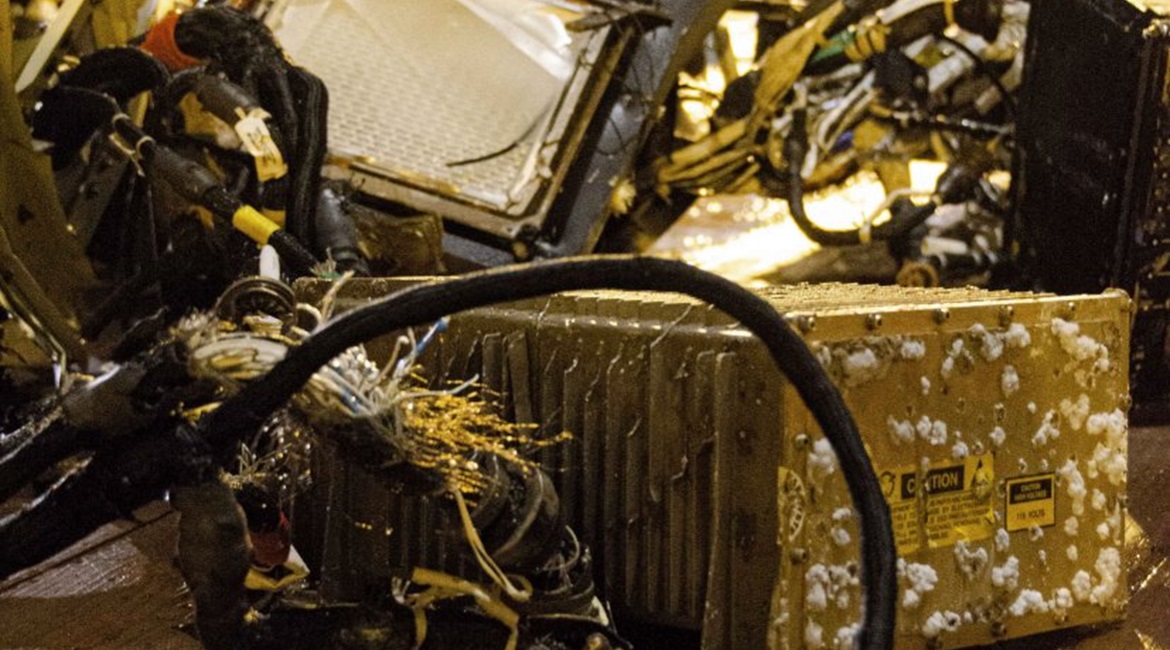
The Canadian Armed Forces (CAF) have ruled out mechanical failure as the cause of the Sikorsky CH-148 Cyclone maritime and anti-submarine warfare (ASW) helicopter that crashed on 29 April in the Ionian Sea.
Colonel John Alexander, director of flight safety and airworthiness investigative authority, told reporters on 16 June that first responders recovered the beacon foil air unit, which houses the memory module for the cockpit voice recorder, the flight data recorder, and a Global Positioning System (GPS) satellite receiver and beacon on the water’s surface. Canada’s National Research Council (NRC) was able produce modelling showing the aircraft’s flight path, attitude, some instrument indications, and the pilots’ inputs into the flight control. CAF spokesperson Lieutenant Nora Amrane said on 17 June that the Cyclone had two pilots.

Parts of the Sikorsky CH-148 Cyclone were recovered during recovery operations on 31 May 2020. The aircraft crashed into the Ionian Sea in April 2020. (Canadian Armed Forces)
The CAF used this information to re-fly the flight profile in its Cyclone simulator as it was captured by the flight data recorder in the moments leading to the crash. Col Alexander said that during the return to land on the HMCS Fredericton , the CH-148 made a pass on the port side of the ship from stern to bow. The aircraft then executed a left-hand turn to establish a down-wind leg in preparation for the approach to the ship.
Looking to read the full article?
Gain unlimited access to Janes news and more...




